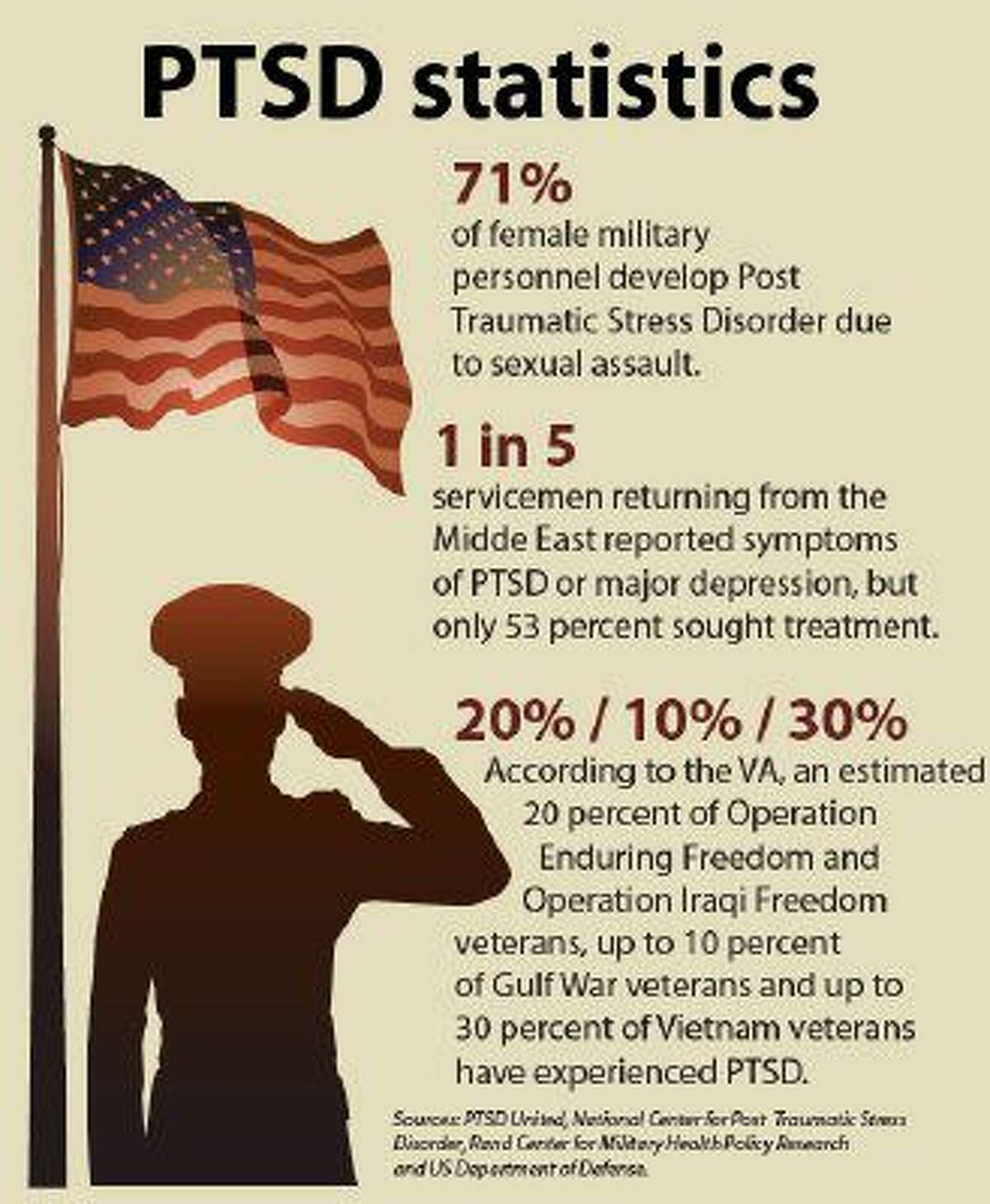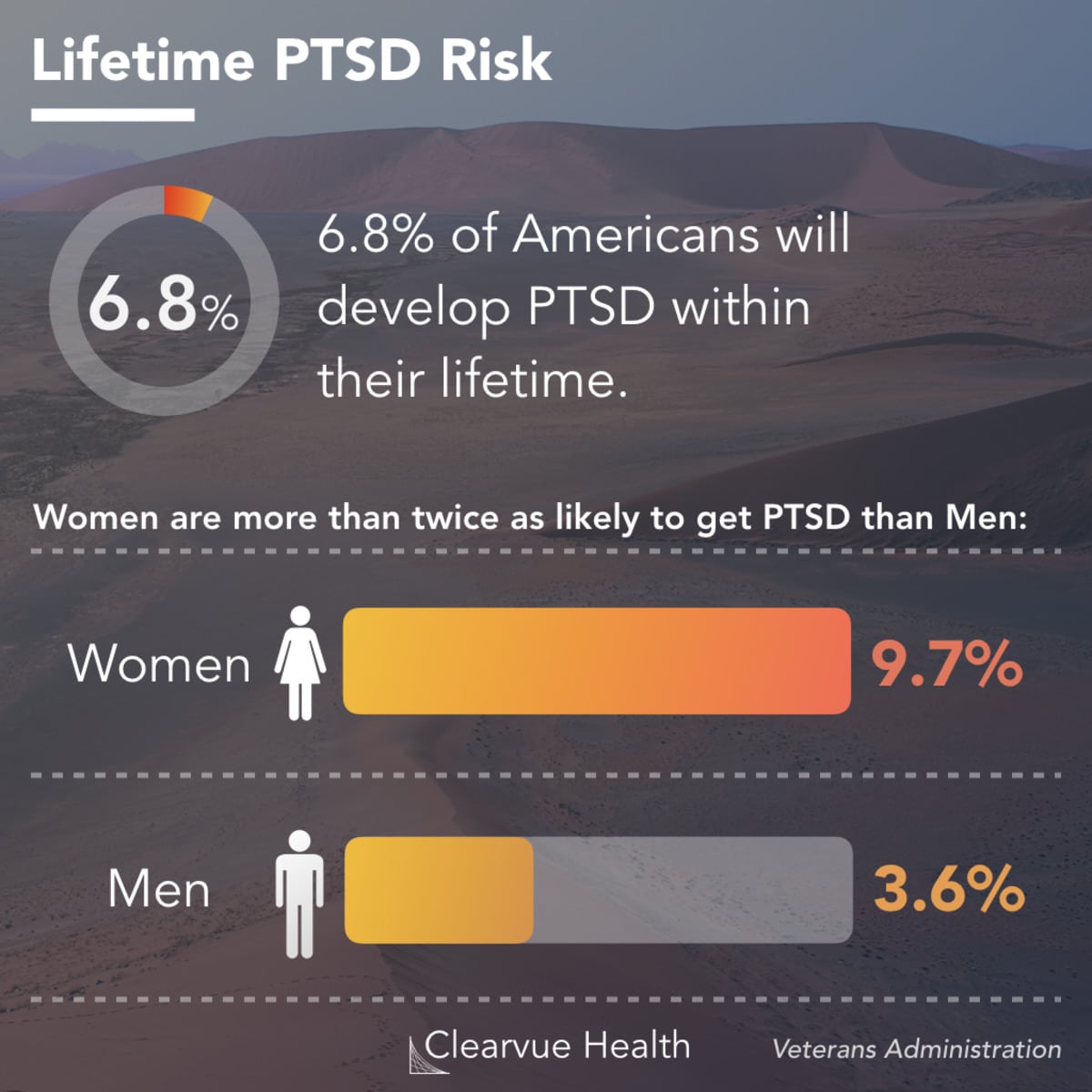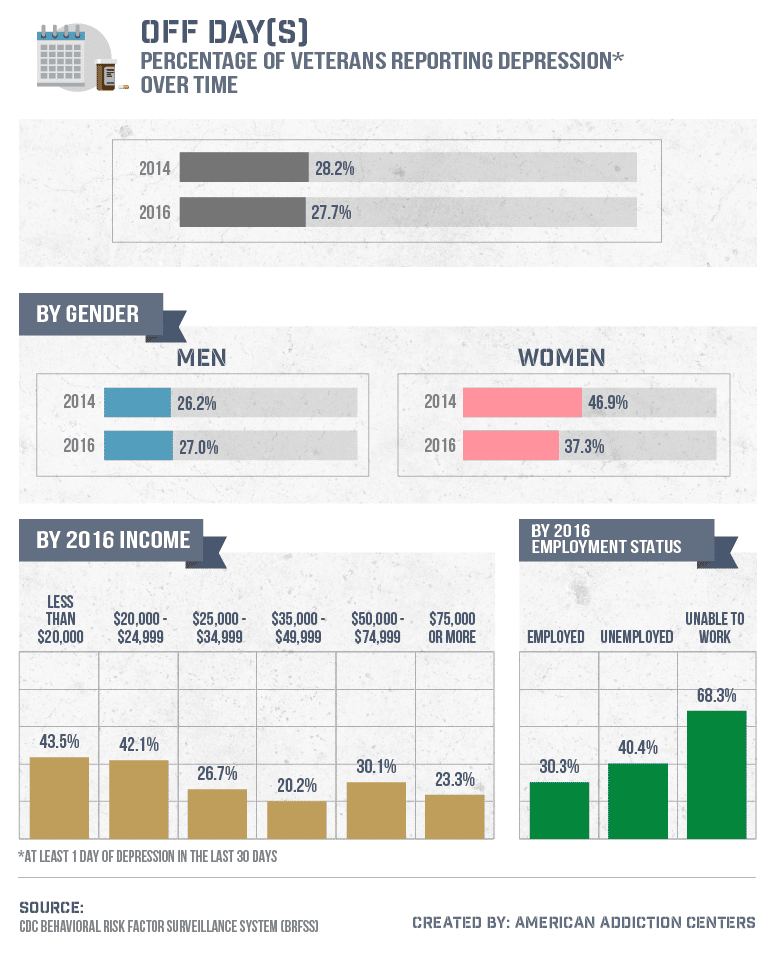Ptsd Treatment For Veterans: Whats Working Whats New And Whats Next
Miriam Reisman
More than a decade of war in the Middle East has pushed post-traumatic stress disorder to the forefront of public health concerns. The last several years have seen a dramatic increase in the number of Iraq and Afghanistan war veterans seeking help for PTSD, shining a spotlight on this debilitating condition and raising critical questions about appropriate treatment options and barriers to care.
While PTSD extends far beyond the militaryaffecting about eight million American adults in a given yearthe problem is especially acute among war veterans. Not only are recent veterans at higher risk of suffering from PTSD than those in the general population, they also face unique barriers to accessing adequate treatment. These include the requirement that they have either an honorable or general discharge to access Department of Veterans Affairs medical benefits, long waiting lists at VA medical centers, and the social stigma associated with mental illness within military communities., According to a study conducted by the RAND Center for Military Health Policy Research, less than half of returning veterans needing mental health services receive any treatment at all, and of those receiving treatment for PTSD and major depression, less than one-third are receiving evidence-based care.
Emerging Evidence Suggests That Screening And Risk Assessments For Suicide Can Be Lifesaving
Screening all patients for suicide risk in mental health, emergency, and primary care settings can detect those who might be thinking about harming themselves, discern their current level of risk, and provide opportunities to offer appropriate careultimately reducing suicide attempts . Screening can be conducted efficiently using validated tools, such as the Ask Suicide-Screening Questions tool, across health care settings . As part of its National Strategy for Preventing Veteran Suicide, VA developed Risk ID, a three-stage suicide screening process that has been implemented successfully in VA settings .
Recommended Reading: Anxiety From Dehydration
There Are High Unmet Needs But Also Opportunities For Improvement In Both Diagnosing And Treating Ptsd
Diagnosing and then treating PTSD can be nuanced due to the complexity and timing of PTS presentation, with patients having multiple symptoms arising from the symptom clusters.16
- PTSD symptoms may start within 3 months of the traumatic event, but sometimes emerge years later.
- PTSD may be substantially underdiagnosed due to comorbidities and substance abuse, stigma associated with the diagnosis, lack of awareness among physicians and patients, and a lack of screening tools.
Further Reading Suggested PTS Resources
Mayo Clinic: Post-Traumatic Stress Disorder
References
Also Check: How Much Does Ptsd Disability Pay Uk
Who Has The Highest Rate Of Ptsd
The risks of one developing posttraumatic stress disorder depend on how traumatic the event is.
Of the different traumatic events, rape has the highest PTSD prevalence at 49%, compared to natural disasters at 3.8% .
PTSD after rape statistics also show that :
- 94% of women who were raped develop PTSD symptoms during the first two weeks after the traumatic event.
- 30% of them still experience PTSD symptoms nine months after the incident.
- 75% of sexual assault survivors were diagnosed with PTSD a month after the incident. This drops to 54% after three months, and it further drops to 41% after a year .
How Many Veterans In The Us Have Ptsd

The number of Veterans with PTSD varies by service era: Operations Iraqi Freedom and Enduring Freedom : About 11-20 out of every 100 Veterans who served in OIF or OEF have PTSD in a given year. Gulf War : About 12 out of every 100 Gulf War Veterans have PTSD in a given year.
What kind of treatment does the VA offer for PTSD?
1-to-1 psychotherapy . This includes proven methods like Cognitive Processing Therapy . PTSD specialists provide regular outpatient care to Veterans with PTSD in each VA medical center across the U.S.
Read Also: How To Prove Service Connected Disability
Ptsd Treatment For Veterans Statistics
SSRIs for PTSD are prescribed to veterans .
- SSRIs had a 60% overall response rate in PTSD patients.
- About 20% to 30% of the patients had complete remission.
- Extended-release venlafaxine had a 78% response rate as well as a 40% remission rate.
Veterans are also given three types of trauma-focused therapy to help with their mental health issues. These are cognitive processing therapy , eye movement desensitization and reprocessing , and prolonged exposure therapy .
A 2021 study also found that about 10 weeks in a military clinic can help improve their mental health issues :
- 38% had significant improvements in their PTSD checklist or PCL.
- 28% of them no longer met the PTSD criteria
- 12.8% of them succeeded.
Understanding A Veteran With Ptsd
Servicemen and women oftentimes face unique challenges when leaving active duty and readjusting to civilian life.
As explained by U.S. Veterans Magazine, these challenges include
- discovering ways to re-establish their roles within the family,
- having to find and obtain a civilian job ,
- and adjusting to a life that involves making their own choices versus being told what to do, how to do it, and when.
However, sometimes soldiers also return home with challenges related to their mental wellbeing as a result of what theyve witnessed while on active duty. And one of the most common mental challenges is post-traumatic stress disorder .
Recommended Reading: Grants For Veterans With Ptsd
What Obituaries Are Trying To Tell Us About Veterans And Ptsd
Carlos Lopez Jr. was still a teenager when he signed up for a two-year stint in the U.S. Army. Not long after, the Iraq War began, and he became one of the first American soldiers to be deployed there, fighting battles in Baghdad, Najaf, and Fallujah.
Five years active duty, three tours, and more than 37 months in extreme combat environments later, Carlos Jr. came home. But he was not the same person, according to his obituary.
Though he was still kind and loving, his family said, he was also very aggressive. Carlos known fondly as Los to his parents, brother, and sisters turned to an acting career as an outlet for the combat life he endured because it allowed him to express his deepest thoughts. He would go on to make his mark in Hollywood, appearing on television in the show Operation Repo and in military action movies including Captain America: The Winter Soldier and the upcoming Bumblebee.
Carlos also wrote, directed, and starred in the award-winning short film PTSD: An American Tragedy, in which he plays a veteran who returns from Iraq suffering from severe post-traumatic stress disorder.
It was a condition the young actor knew all too well. On June 24, 2018, Carlos himself passed away of PTSD.
First Responder Ptsd Statistics
If youâre wondering how common is PTSD among first responders, this section will show you the up-to-date stats.
Surprisingly, more than 80% of first responders experience traumatic events on the job. The challenging and dangerous situations they face cause them to be at a high risk of developing PTSD as a work-related injury or condition.
In fact, according to the Substance Abuse and Mental Health Services Administration, an estimated 30% of first responders develop behavioral health conditions including, but not limited to, depression and PTSD, as compared with 20% in the general population.
Recommended Reading: Can I Receive Disability For Ptsd
Coping Methods For Managing Ptsd Symptoms
Beyond formal mental health care approaches, several self-help methods may prove valuable in managing PTSD symptoms. These practices are widely recommended by mental health experts as solutions that veterans can utilize in their spare time or when exposed to particular stressors. These techniques may be suggested as a complement to ongoing mental health treatment.
- Physical activity: Exercise can help relieve stress and elevate ones mood.
- Aromatherapy: Certain smells, such as orange essential oil, may mitigate negative emotions associated with PTSD.
- Mindfulness practices: From formal meditation to simply noticing ones senses, practicing being present can reduce trauma reactivity.
- Deep breathing:This seemingly simple technique can be surprisingly effective, and is available anytime, anywhere.
What Policies Work Best
We also tried to get a sense of what policies work best at mitigating the problem of PTSD. Using the model, we examined the long-term effects of policies within the individual components of the system, the VA and the DOD, as well as across the entire system.
We found that, before and during wars, prevention interventions are the most effective policy to decrease the prevalence of PTSD. Improving resiliency can work as a vaccine or early treatment before the onset of the cascading effects of PTSD.
However, social barriers such as the stigma of PTSD are still in place, affecting willingness to receive early treatment.
Overall, our results show that in a post-war period there is no easy solution for overcoming the problem of PTSD, and the current screening and treatment policies used by the VA and the DOD must be revolutionized to have any noticeable effect.
The VA and the DOD should work together and try to offer timely service to patients. However, we showed that they cannot do much to decrease health care costs. These are the consequences of wars.
Donât Miss: How To Deal With Someone With Ptsd
Also Check: What Does 100 Va Disability Mean
How Many Veterans Have Ptsd And What Can We Do About It
Ask how many veterans have PTSD and you may be shocked by the answer. According to the U.S. Department of Veterans Affairs, 11-20 out of every 100 veteransexperience post-traumatic stress disorder a number that is both overwhelming and, unfortunately, not always acknowledged to the degree that it should be.
Post-traumatic stress disorder is a mental illness that occurs after exposure to a traumatic event. Unable to cope with what has been experienced, the brain exists in a near-constant state of fight-or-flight, with intense physical and emotional reactions triggered by memories of the event that are spurned by high-anxiety situations.
For veterans returning from combat zones, the symptoms of PTSD often include nightmares, intrusive thoughts, and difficulties processing the emotions of the trauma. Other symptoms include difficulties sleeping and maintaining relationships, wild fluctuations in anger and aggression, and self-destructive behaviors.
So why do so many soldiers have PTSD? And why do some experience it but not others? Ina study published in Clinical Psychological Science, researchers determined that the stress of combat was a large contributor to veterans PTSD but usually not the only one. There is often an underlying, pre-combat psychiatric disorder, and the experience of directly doing harm to another is a common thread. An additional common factor was age, with younger soldiers being more likely to develop PTSD.
Work Through Survivors Guilt

Feelings of guilt are very common among veterans with PTSD. You may have seen people injured or killed, often your friends and comrades. In the heat of the moment, you dont have time to fully process these events as they happen. But lateroften when youve returned homethese experiences come back to haunt you. You may ask yourself questions such as:
- Why didnt I get hurt?
- Why did I survive when others didnt?
- Could I have done something differently to save them?
You may end up blaming yourself for what happened and believing that your actions led to someone elses death. You may feel like others deserved to live more than youthat youre the one who should have died. This is survivors guilt.
You May Like: Is Ssi The Same As Social Security Disability Benefits
Take The Next Step To Connect With Care
Every day, Veterans from all military service branches and eras connect with proven resources and effective treatments. Heres how to take the next step: the one thats right for you.
Read VA’s latest coronavirus information. If you have flu-like symptoms such as fever, cough, and shortness of breath, please call before you visit your local medical center or clinic. If you have an appointment, consider making it a telehealth appointment.
New to VA? Apply for health care benefits.
- Getting started is simple. Create a free account online to help ease your enrollment process. To prepare to apply for VA health care in person, by telephone, or by mail, explore VAs How to Apply page.
- Not sure whether you are eligible for VA health care benefits? Read about eligibility for VA health care.
- Unsure of what kind of help you need? Call 1-877-222-VETS to find the right resources to meet your needs, Monday through Friday, 8 a.m. to 8 p.m. ET. If you have hearing loss, call TTY: .
- Veterans family members and caregivers can see whether they qualify for VA medical benefits as a spouse, surviving spouse, dependent child, or caregiver. Explore family and caregiver health benefits.
Already enrolled in VA and interested in mental health support? Schedule a mental health appointment.
What about other options at VA? VA offers a variety of tools and resources.
What about support beyond VA?
Veterans Need Ptsd Treatment
For American military veterans, social support and expert care are necessary to manage life-threatening PTSD symptoms. These veteran PTSD statistics show that millions of veterans need rehabilitative care, and the staff at Heroes Mile is ready to provide that care.
Our treatment center in DeLand, Florida provides care to address addiction, PTSD, and MST for veterans who need help. If you would like to learn more about our treatment options for veterans, you can fill out a digital contact form or call our admissions specialists at 1-888-VET-NOW2. With our veteran staff members, weve got your six!
for Veterans by Veterans
Also Check: When Does Short Term Disability Reset
What Are The 5 Types Of Ptsd
PTSD Examined: The Five Types of Post Traumatic Stress Disorder
- Normal Stress Response. Normal stress response is what occurs before PTSD begins.
- Acute Stress Disorder.
What are the 4 phases of PTSD?
PTSD can be divided into four phases: the impact phase, the rescue phase, the intermediate recovery phase, and the long-term reconstruction phase. The impact phase encompasses initial reactions such as shock, fear, and guilt. In the rescue phase, the affected individual begins to come to terms with what has happened.
How Long Does Ptsd Last For
Some people with PTSD recover within just 6 months, while others have symptoms that can last much longer. In some people, the condition becomes chronic and can result in depression and anxiety. A doctor, such as a psychologist or psychiatrist, who has experience helping people with mental illnesses can diagnose PTSD.
Don’t Miss: Is Social Security Disability Considered Income For Medicaid
Many Services Are Available But The Care Systems Have Gaps
What programs and services exist to meet the needs of returning troops with these conditions? What are the gaps? What steps can be taken to close the gaps? To address these questions, the RAND team examined the care systems, identified gaps in care and barriers to care, and assessed how best to fill these gaps.
How Do You Date A Veteran With Ptsd
Here are my TOP 5 TIPS FOR A HEALTHY RELATIONSHIP WITH A COMBAT VETERAN:
Can PTSD ever be cured?
As with most mental illnesses, no cure exists for PTSD, but the symptoms can be effectively managed to restore the affected individual to normal functioning. The best hope for treating PTSD is a combination of medication and therapy.
Also Check: Can You Work While On Disability In Pa
Ptsd Treatment For Veterans
The treatment of PTSD is multidimensional, including medication, therapy, and in recent years, mindfulness-based treatments have provided an alternative to managing both PTSD and chronic pain.
While some researchers have said that exposure therapy, which is trauma focused, is not always advisable for most veterans with PTSD, a 2019 study suggested otherwise. The study was the first to conclude that exposure therapy did not increase the risk of exacerbation of PTSD symptoms among participants.
You May Like: Why Is Life So Depressing
Selected Major Accomplishments In Va Research

- 1989:Created the National Center for PTSD to address the needs of Veterans and other trauma survivors with PTSD
- 2007: Confirmed the value of prolonged exposure therapy as a treatment for women Veterans with PTSD
- 2013:Funded, along with the Department of Defense, two consortia to improve treatment for PTSD and mild traumatic brain injury
Don’t Miss: How To Ask Your Doctor For Short Term Disability
Mental And Behavioral Health Issues
- Substance Use Disorders: More than 20% of all veterans with PTSD also struggle with substance abuse challenges, referred to clinically as substance use disorders. Among veterans of the Iraq and Afghanistan war, for example, 63% diagnosed with substance abuse problems were also diagnosed with PTSD. The connection may relate to coping: Substance abuse may represent a means to manage distressing thoughts and feelings related to experienced trauma.
- Other Mental Health Disorders: Among people diagnosed with PTSD, roughly 80% meet diagnostic criteria for at least one other form of mental illness. Veterans are no exception to this troubling pattern. Many military service members with PTSD also experience depression and anxiety among other conditions. Additionally, some research indicates that veterans with PTSD are at increased risk of committing suicide, particularly if they experience combat-related guilt.
